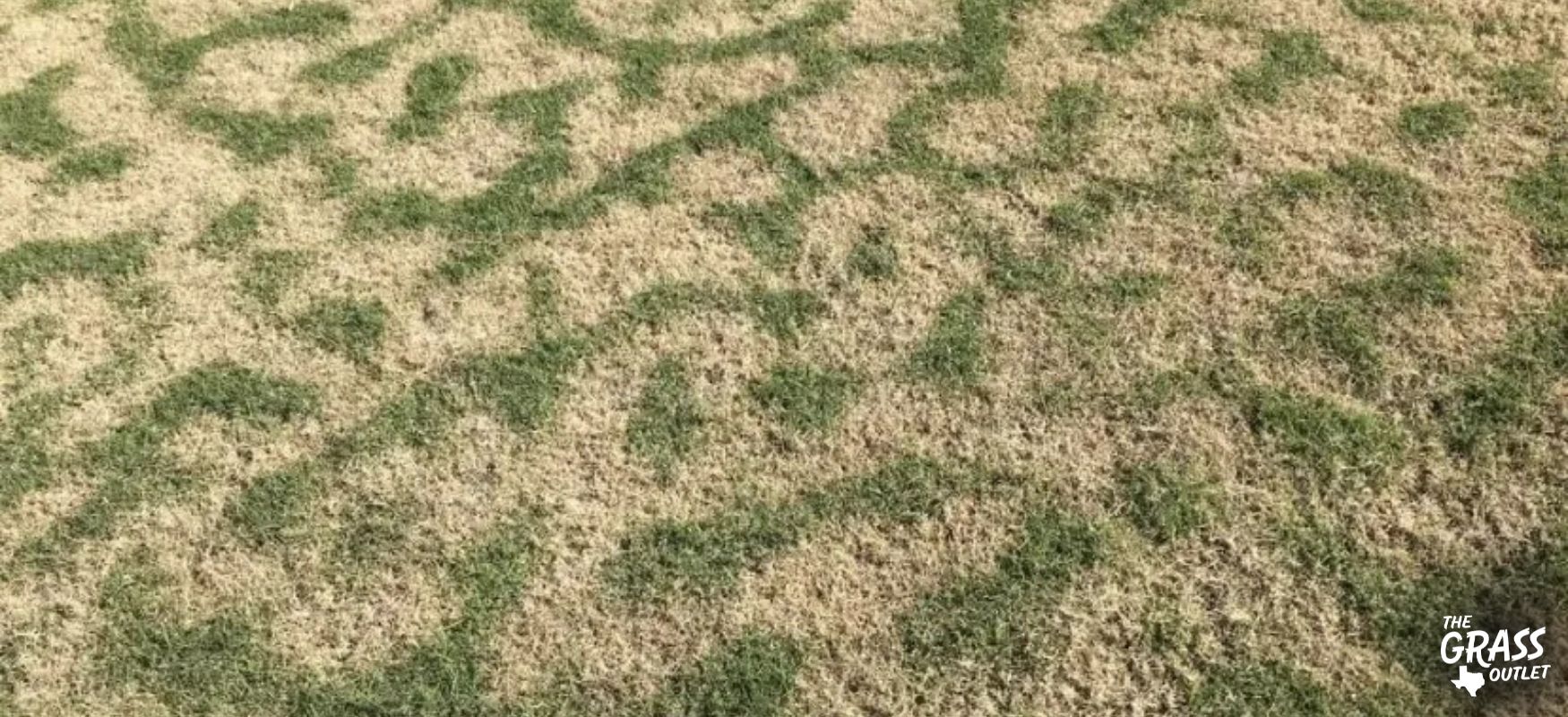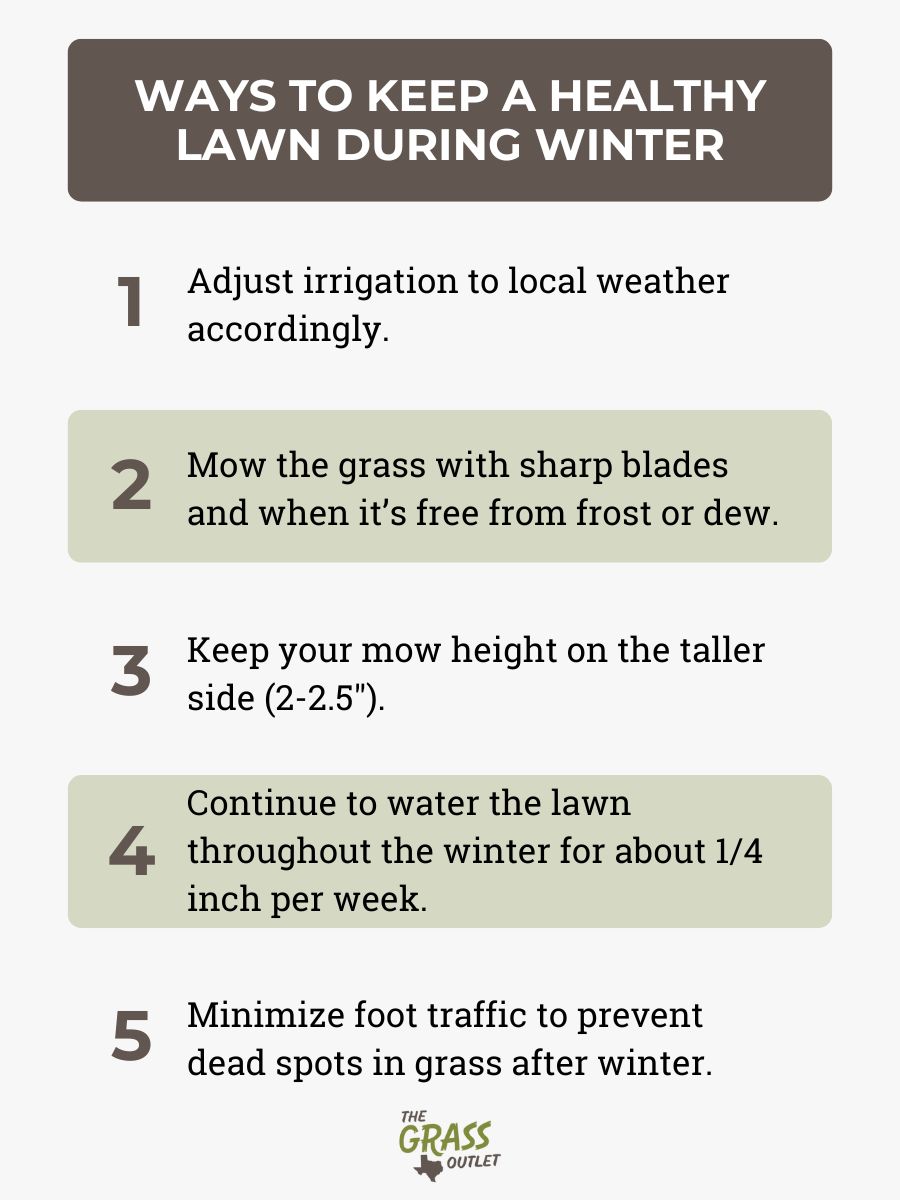What To Do About Post Frost “Stripes” on Warm Season Grass
Are you a homeowner with warm-season grass like St. Augustine or Bermuda? Have you noticed there are stripes on your lawn after a frost? If so, you’ll be happy to know your “psychedelic turf” wasn’t caused by fungi, bugs, or a chemical weapons experiment gone astray. No, the true cause is much more down to earth—as it’s likely that parts of your lawn have simply gone dormant as a result of a heavy frost.
In this blog, we’ll discuss the causes of this bizarre discoloration and provide tips for how to keep your lawn healthy while the cold temperatures persist. By the end, you’ll have a better understanding of what’s actually going on with your lawn, and what you can do to restore it to its former glory.

What Causes Stripes On Warm Season Grass
If you’re stuck wondering why their lawn looks like a cross between Tigger the Tiger and Marty from Madagascar, you’re not alone. Many people have experienced this type of lawn damage and are left wondering how it’s caused.
Here’s a brief explanation of why: When the first frosts of the season come to town, the cold winter temperatures usually aren’t severe enough to freeze your turf completely, as there are variations in frost formation that vary depending on temperature and moisture levels in different parts of your lawn. This causes some parts of your lawn to go dormant (turning brown) while other, slightly warmer areas, stay green, resulting in bizarre-looking grass that’s just dormant, not dead.
Not dead? That’s right. Just like how a bear hibernates in winter, warm-season grasses effectively go to sleep in winter, to protect themselves from the cold winter temps. This sleep cycle causes the grass to turn from green to brown, while the grass remains dormant (or, “temporarily inactive”) for most of the winter.
How To Keep Your Lawn Healthy During The Winter

As bad as it looks, discoloration is not a cause for concern, as subsequent frost will eventually turn your grass all but completely brown. This will result in a uniformly dormant turf, which (as long as your lawn is maintained in the interim) will completely disappear from your lawn by next spring.
Wondering how to do it? Follow these tips for keeping your dormant lawn healthy through winter, to ensure it blossoms come spring.
Adjust Accordingly
Warm-season grasses go dormant when average air or soil temperatures are below 50 to 55 degrees Fahrenheit. That said, Texas weather can be a bit bipolar, so it’s important to follow your local weather and make irrigation adjustments accordingly.
Mow With Caution
You’ll want to keep mowing your grass until it stops growing or turns brown. Then you can gradually lower the mowing height to allow better airflow and water drainage. When you do, be sure to always mow with sharp blades to prevent ripping & damaging your grass, and never mow your grass when it’s covered with frost or dew.
Keep Your Mow Height on The Taller Side
Keeping your mow height on the taller side (say, between 2 and 2.5 inches) will help keep the roots warm. This will keep your grass short enough to resist disease spread, but not so short that it becomes overly stressed by freezing temperatures.
Continue to Water Your Lawn
Something to keep in mind is that the roots of your grass are still actively growing even when your grass leaves are dormant. That’s why it’s important to continue to give the lawn some water throughout the winter, usually about ¼ inch per week.
Minimize Foot Traffic
Another important thing to be aware of is the fact that frozen grass is especially susceptible to damage by foot traffic. In fact, concentrated foot traffic in freezing weather can kill individual grass plants, resulting in dead spots by spring. To prevent this, try to minimize foot traffic as much as possible during the winter, especially earlier in the day when the grass is covered with frost, which makes it more brittle.
Get All Your Turfgrass Questions Answered Today!
As with anything, the more you know, the better equipped you’ll be. That’s why learning about your grass is important. By understanding what you can do to take care of your turf, you can take preventative measures and do the right things to ensure that your warm-season grass remains healthy and green come spring.
If you are looking for additional resources on how to take care of your warm-season grass, look no further than The Grass Outlet. Between our comprehensive resource library and our knowledgeable staff, we can help answer any question you may have about your grass.
Check out our grass tips for additional guides, or contact our team today to ask a question. We can’t wait to help you keep your warm season grass healthy and beautiful all year long!





